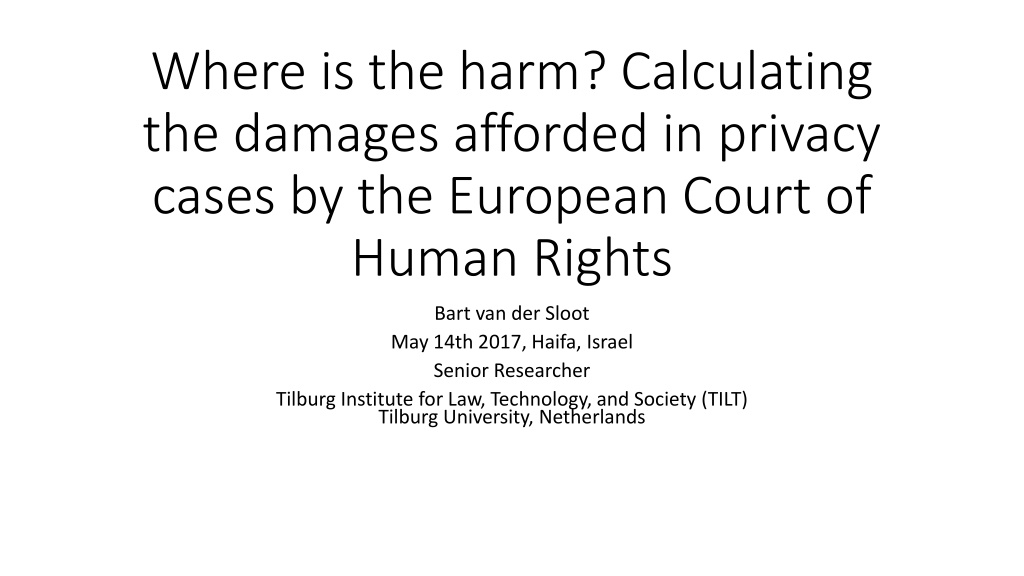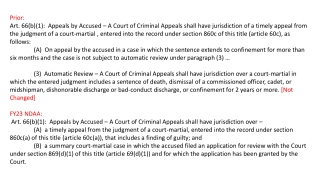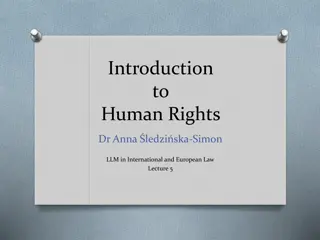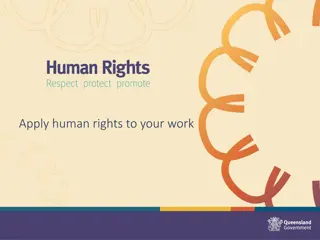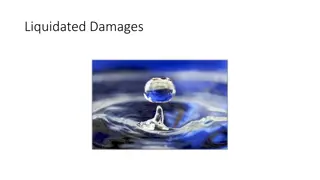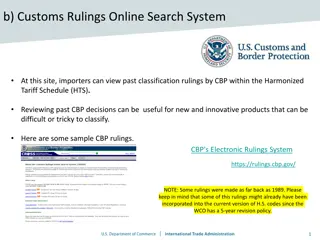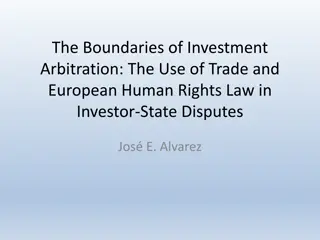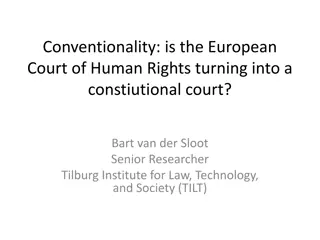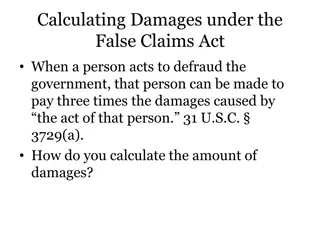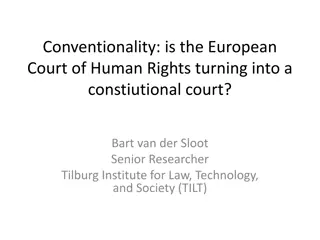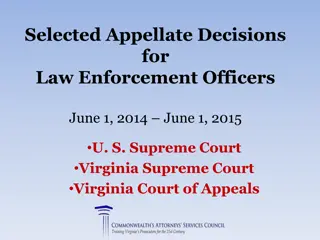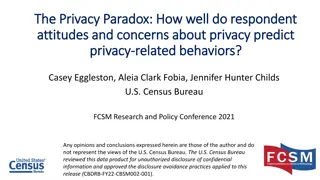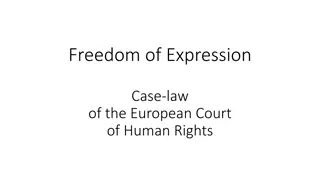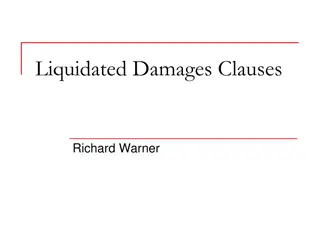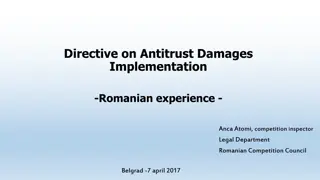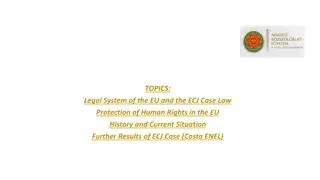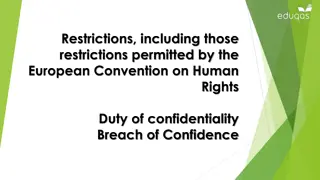Privacy Cases and Damages: European Court of Human Rights Rulings
The presentation explores the calculation of damages in privacy cases by analyzing the decisions of the European Court of Human Rights. It delves into the right to privacy as outlined in the European Convention on Human Rights and discusses the living instrument doctrine, various articles under the Convention, and the role of the European Court of Human Rights in upholding privacy rights.
- Privacy Cases
- European Court of Human Rights
- Damages Calculation
- Privacy Rights
- European Convention on Human Rights
Download Presentation

Please find below an Image/Link to download the presentation.
The content on the website is provided AS IS for your information and personal use only. It may not be sold, licensed, or shared on other websites without obtaining consent from the author. Download presentation by click this link. If you encounter any issues during the download, it is possible that the publisher has removed the file from their server.
E N D
Presentation Transcript
Where is the harm? Calculating the damages afforded in privacy cases by the European Court of Human Rights Bart van der Sloot May 14th 2017, Haifa, Israel Senior Researcher Tilburg Institute for Law, Technology, and Society (TILT) Tilburg University, Netherlands
European Convention on Human Rights Article 8 1. Everyone has the right to respect for his private and family life, his home and his correspondence. 2. There shall be no interference by a public authority with the exercise of this right except such as is in accordance with the law and is necessary in a democratic society in the interests of national security, public safety or the economic well-being of the country, for the prevention of disorder or crime, for the protection of health or morals, or for the protection of the rights and freedoms of others.
Living instrument doctrine Other articles in the Convention: Bodily Integrity (Article 2 and 3 ECHR) Right to reputation (Article 10.2 ECHR) Right to a fair trial (Article 5 and 6 ECHR) Right to marry and found a family (Article 12 ECHR)
Living instrument doctrine Rights explicitly rejected from the Convention Right to propety (Article 1 First Protocol) Right to education (Article 2 First Protocol) Right to personal development (Articles 22, 26 and 29 UDHR) Right to nationality (Article 15 UDHR)
Living instrument doctrine Rights not included in the Convention Right to data protection Right to a clean environment Right to a name Minority Rights
Courts European Commission on Human Rigths European Court of Human Rights plenary + chamber First Section (1999) Second Section (1999) Third Section (1999) Fourth Section(1999) Fifth Section (2005) Grand Chamber (1994)
Admissibility ARTICLE 33 Inter-State cases Any High Contracting Party may refer to the Court any alleged breach of the provisions of the Convention and the Protocols thereto by another High Contracting Party. ARTICLE 34 Individual applications The Court may receive applications from any person, nongovernmental organisation or group of individuals claiming to be the victim of a violation by one of the High Contracting Parties of the rights set forth in the Convention or the Protocols thereto. The High Contracting Parties undertake not to hinder in any way the effective exercise of this right.
Admissibility Legal Persons > only after Stes Colas Est (2002) marginally Groups > in principle not Inter-State Complaints > only a hand full Individual persons ECtHR rejects: Class action/actio popularis ECtHR rejects: Legal persons as claimants ECtHR rejects: In abstracto claims ECtHR rejects: A-priori cases ECtHR rejects: Hypothetical complaints ECtHR rejects: claims about minimal harm (De minimis rule) ECtHR rejects: claims about societal interests > only individual interests: autonomy, freedom, dignity
Rules of the Court Rule 60 Claims for just satisfaction 1. An applicant who wishes to obtain an award of just satisfaction under Article 41 of the Convention in the event of the Court finding a violation of his or her Convention rights must make a specific claim to that effect. 2. The applicant must submit itemised particulars of all claims, together with any relevant supporting documents, within the time-limit fixed for the submission of the applicant s observations on the merits unless the President of the Chamber directs otherwise. 3. If the applicant fails to comply with the requirements set out in the preceding paragraphs the Chamber may reject the claims in whole or in part. 4. The applicant s claims shall be transmitted to the respondent Contracting Party for comment.
